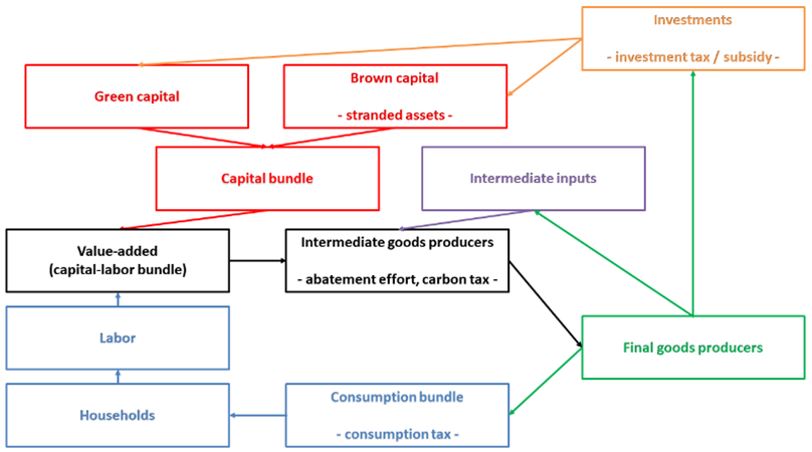References
Cahen-Fourot, L., Campiglio, E., Godin, A., Kemp-Benedict, E. and Trsek, S. (2021). Capital stranding cascades: The impact of decarbonisation on productive asset utilisation. Energy Economics, 103, 105581.
Caldecott, B., Tilbury, J. and Carey, C. (2014). Stranded Assets and Scenarios. Stranded Assets Programme Discussion Paper – January 2014.
Ernst, A., Hinterlang, N., Mahle, A. and Stähler, N. (2023). Carbon pricing, border adjustment and climate clubs: Options for international cooperation. Journal of International Economics, 144, 103772.
Frankovic, I. (2022). The impact of carbon pricing in a multi-region production network model and an application to climate scenarios. Deutsche Bundesbank Discussion Paper No. 07/2022.
Ghassibe, M. (2021). Monetary policy and production networks: an empirical investigation. Journal of Monetary Economics, 119, 21–39.
Godin, A. and Hadji-Lazaro, P. (2022). Identification des vulnérabilités à la transition induites par la demande: application d’une approche systémique à l’Afrique du Sud. Revue économique, 73 (2), 267–301.
Hinterlang, N., Martin, A., Röhe, O., Stähler, N. and Strobel, J. (2021). Using energy and emissions taxation to finance labor tax reductions in a multi-sector economy: An assessment with EMuSe. Deutsche Bundesbank Discussion Paper No. 50/2021.
Hinterlang, N., Martin, A., Röhe, O., Stähler, N. and Strobel, J. (2022). Using energy and emissions taxation to finance labor tax reductions in a multi-sector economy. Energy Economics, 115, 106381.
Nordhaus, W.D. 2017. “Evolution of Assessments of the Economics of Global Warming: Changes in the DICE model, 1992–2017”. Climatic Change 148 (4): 623-40.






